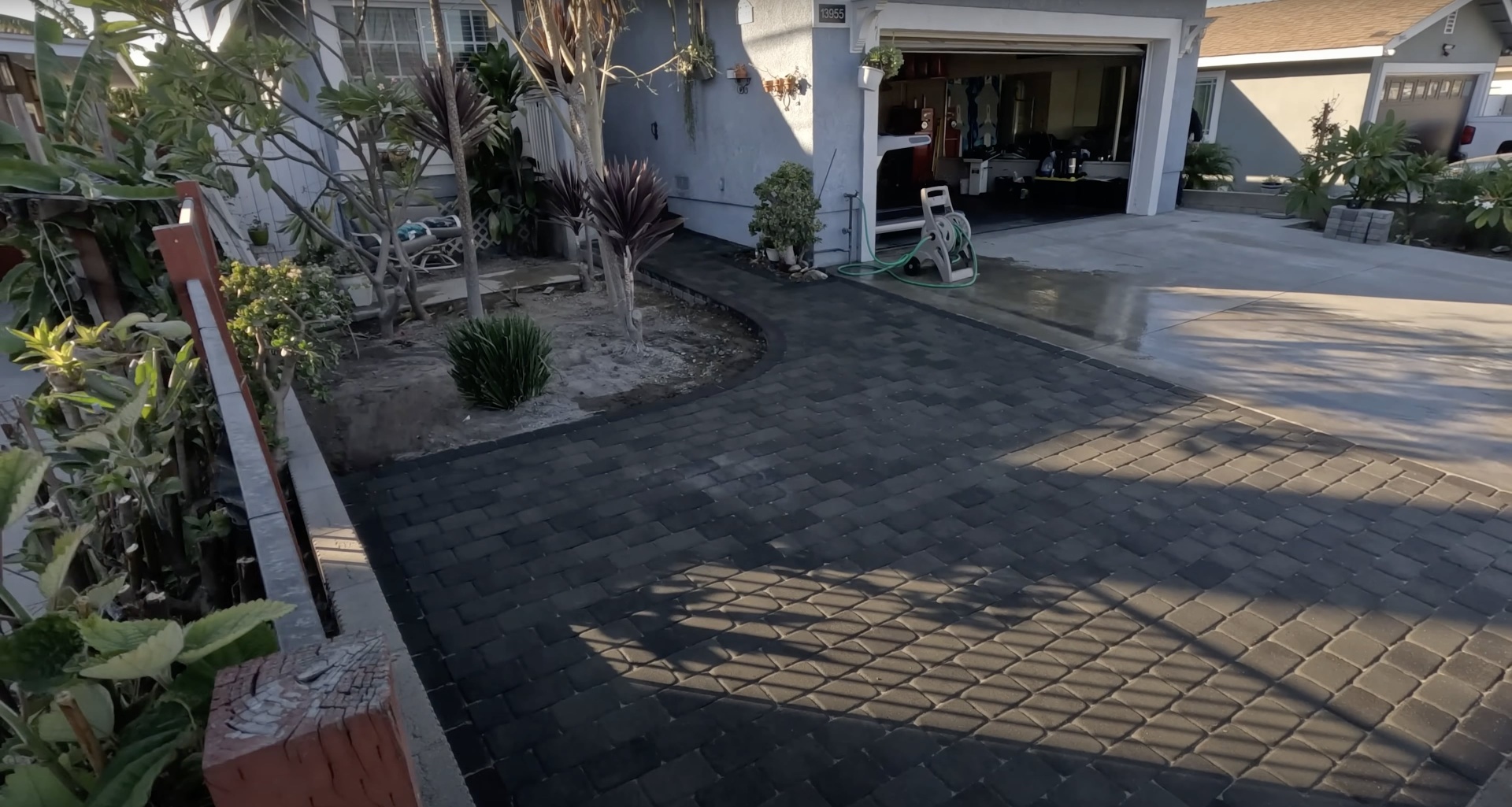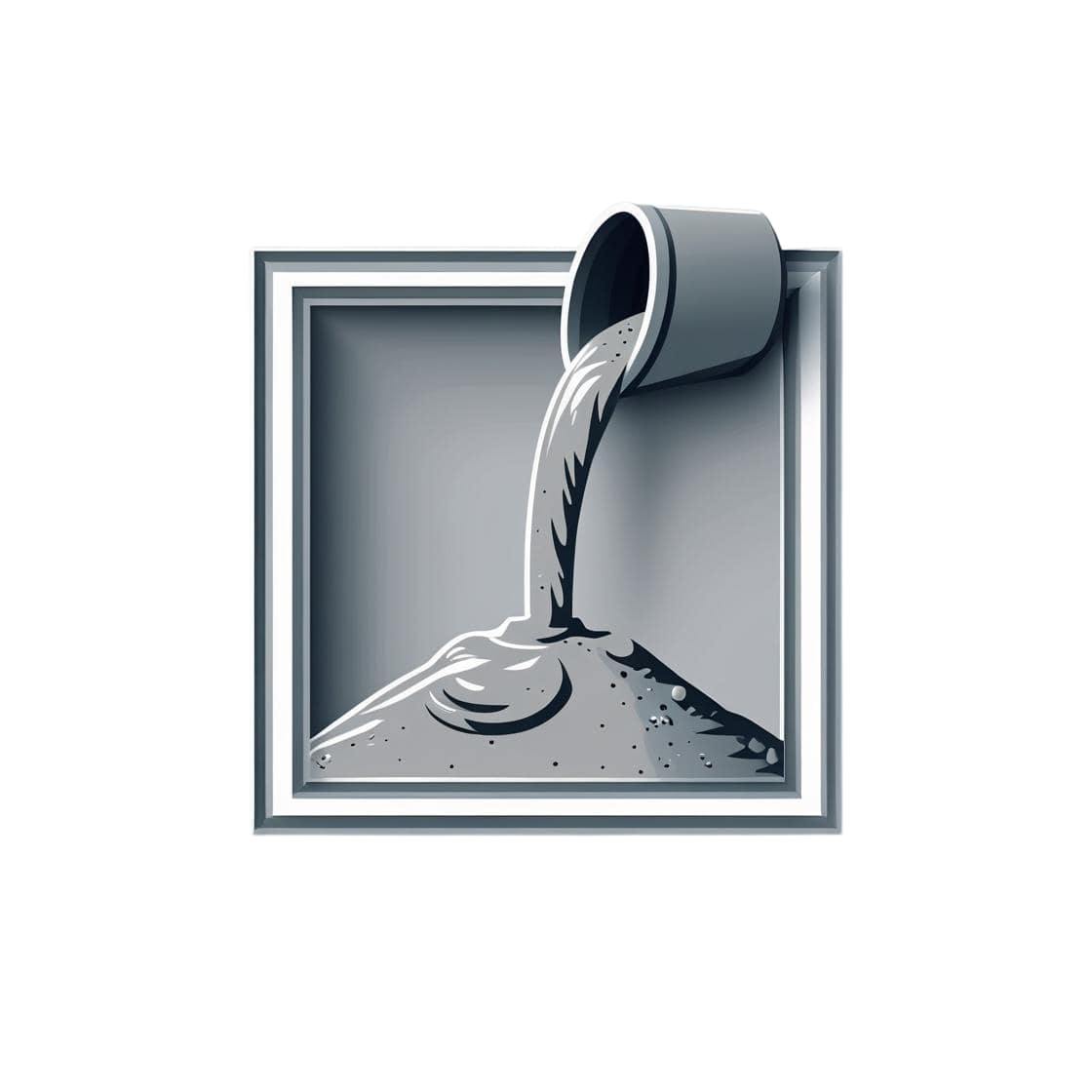Stamped Concrete vs. Traditional Pavers: Which is Right for Your Patio?

You've decided it's time to upgrade your backyard with a beautiful new patio. Smart move. A well-designed patio can transform your outdoor space into an extension of your home, perfect for entertaining, relaxing, or just enjoying Florida's gorgeous weather. But now comes the big question: stamped concrete or traditional pavers?
This is one of the most common questions I get from homeowners planning their outdoor projects. Both options have their devoted fans, and honestly, both can look absolutely stunning when installed properly. The right choice for your patio depends on your priorities, budget, and how you plan to use the space.
After installing hundreds of patios in the Sunrise area over the years, I've learned that there's no one-size-fits-all answer. So let's break down the real differences between stamped concrete and pavers, covering everything from initial costs to long-term maintenance, so you can make an informed decision.
Understanding Stamped Concrete
Stamped concrete is exactly what it sounds like: freshly poured concrete that's stamped with patterns and textures before it fully hardens. Modern stamping techniques can mimic the look of natural stone, brick, slate, wood, and even cobblestone – often so convincingly that you have to look twice to realize it's concrete.
The process involves pouring a concrete slab, adding color (either integral color mixed into the concrete or color hardener applied to the surface), and then pressing texture mats into the surface while it's still workable. After the concrete cures, it's sealed to protect the finish and enhance the color.
What makes stamped concrete particularly appealing is the seamless look it creates. Unlike pavers, which have individual pieces with joints between them, stamped concrete is one continuous surface. This gives your patio a cleaner, more unified appearance that many homeowners prefer.
Understanding Traditional Pavers
Pavers are individual units – typically made from concrete, clay, or natural stone – that are laid in patterns over a prepared base. They come in countless shapes, sizes, colors, and textures, giving you almost unlimited design possibilities.
Installing pavers is more labor-intensive than pouring stamped concrete. Each piece must be placed individually, with sand joints between them. The base preparation is crucial – a properly compacted base with several layers of gravel and sand ensures the pavers won't shift or settle unevenly over time.
The beauty of pavers lies in their authentic look and feel. Stone pavers especially have natural variations in color and texture that give them character and charm. Clay pavers offer warm, rich colors that can create a Mediterranean or European-style ambiance in your outdoor space.
Cost Comparison: The Bottom Line
Let's talk money, because budget is usually a major factor in any home improvement decision. Generally speaking, stamped concrete is the more budget-friendly option, typically costing 30-50% less than comparable pavers.
For a typical patio project in Sunrise, stamped concrete might run anywhere from $8 to $15 per square foot installed, depending on the complexity of the pattern and colors. Basic pavers start around $10-12 per square foot but can easily climb to $20-30 per square foot for premium materials and intricate patterns.
However, don't make your decision based solely on upfront costs. You need to consider the total cost of ownership over the life of your patio, including maintenance and potential repairs. Sometimes spending more initially can save you money and headaches down the road.
Installation Time and Process
Stamped concrete wins hands-down when it comes to installation speed. A typical residential patio can often be completed in just a couple of days – one day for pouring and stamping, then 24-48 hours for curing before you can walk on it. You might wait another day or two before sealing, but the basic structure is done quickly.
Paver installation takes considerably longer. The same size patio might take 4-7 days or more, depending on the pattern complexity and site conditions. Each paver must be placed individually, leveled, and compacted. Then polymeric sand gets swept into the joints and activated with water to lock everything in place.
The faster installation of stamped concrete means less disruption to your daily life and potentially lower labor costs. But remember, rushing through installation of either material is a recipe for problems. Quality workmanship takes time, no matter which option you choose.
Durability and Longevity
Both stamped concrete and pavers can last decades when properly installed and maintained, but they fail in different ways. Stamped concrete is more prone to cracking, especially in our Florida climate where soil shifts and settles. When cracks appear in stamped concrete, they're very noticeable and can be challenging to repair invisibly.
Pavers, on the other hand, are more forgiving when it comes to ground movement. Because they're individual units with sand joints between them, they can flex and adjust as the ground settles without cracking. If one paver does get damaged or stained, you can simply replace that individual piece rather than repairing the entire surface.
The sealed surface of stamped concrete resists staining better than pavers initially. However, that seal needs to be reapplied every 2-3 years to maintain its protective qualities. Pavers are more porous and can stain more easily, but certain stains can often be power-washed away or the affected paver can be replaced.
Maintenance Requirements
Here's where things get interesting. Many people assume stamped concrete is "low maintenance," but that's not quite accurate. Yes, the surface itself is easy to sweep and hose off, but maintaining that beautiful appearance requires regular sealing every few years. Skip the sealing, and you'll notice the color fading and the surface becoming more susceptible to stains and damage.
Pavers require different maintenance. You'll want to power-wash them periodically to remove algae, mildew, and dirt buildup. The sand joints between pavers will eventually wash out or break down, requiring replacement every few years. Weeds can sometimes sprout in these joints if you're not using polymeric sand or sealants.
Both options need cleaning and some level of ongoing care. I'd call it roughly a tie on maintenance, with the tasks being different rather than one being significantly easier than the other. The key is committing to regular upkeep for whichever material you choose.
Appearance and Design Flexibility
This is where personal preference really comes into play. Stamped concrete offers impressive versatility – you can choose from dozens of patterns and virtually unlimited color combinations. The seamless surface creates a clean, modern look that many homeowners love. Plus, you can combine multiple patterns or add decorative borders for custom designs.
Pavers shine when you want that authentic, dimensional look. Natural stone pavers especially have depth and character that's hard to replicate with stamping. The individual pieces create visible joint lines that some people find more attractive and traditional. You can also create intricate geometric patterns, mix colors and sizes, and add decorative accents more easily with pavers.
One advantage of stamped concrete is that it can be colored to match your home's exterior or coordinate with other hardscaping elements. Pavers offer this too, but you're limited to the colors available from manufacturers rather than custom-mixed tints.
Climate Considerations for South Florida
Living in Sunrise means dealing with specific weather challenges that affect your patio choice. Our intense sun can cause stamped concrete colors to fade faster than in cooler climates, making regular sealing especially important. The heat can also cause concrete to expand, potentially leading to cracks if expansion joints weren't properly placed during installation.
Pavers handle heat pretty well because the joints allow for natural expansion and contraction. However, our frequent heavy rains can wash out joint sand more quickly than in drier climates. The moisture also promotes algae and mildew growth on both materials, though pavers' textured surfaces can be more prone to buildup in shaded areas.
One thing to consider: both materials can get hot underfoot during Florida summers. Light-colored options stay cooler than dark colors, which is worth thinking about if you plan to walk barefoot on your patio frequently.
Making Your Decision
So which should you choose? Here's my honest recommendation: go with stamped concrete if you want a seamless, modern look at a lower initial cost, and you're comfortable with periodic sealing maintenance. It's an excellent choice for larger patios where the continuous surface creates a striking visual impact.
Choose pavers if you love the authentic look of individual stones, want the flexibility to replace damaged sections easily, or are creating intricate patterns. Pavers also make sense if you might need to access underground utilities in the future – you can remove and replace pavers without leaving obvious patches.
Budget-wise, if you're working with limited funds, stamped concrete lets you achieve a high-end look for less money upfront. But if you can afford the higher initial investment, many homeowners find that pavers' durability and repairability provide better long-term value.
Whatever you decide, the most important factor is hiring an experienced contractor who specializes in your chosen material. Poor installation ruins even the best materials, while expert craftsmanship makes either option shine. At Sunrise Concrete Construction, we've installed both stamped concrete and paver patios throughout the area, and we're happy to discuss which option best fits your specific situation, budget, and vision.
Final Thoughts
Your patio is more than just an outdoor surface – it's an investment in your home's value and your family's enjoyment. Both stamped concrete and pavers can create beautiful, functional spaces that you'll love for years to come.
Take time to look at examples of both materials, preferably installed patios that are a few years old so you can see how they age. Talk to neighbors who have each type and ask about their experiences. Walk on both surfaces barefoot and in shoes to see how they feel.
And most importantly, work with a contractor who will listen to your needs, answer your questions honestly, and deliver quality workmanship regardless of which material you choose. Your patio should be a source of pride and pleasure, not frustration and regret.
Ready to start planning your dream patio? Whether you're leaning toward stamped concrete or pavers – or still deciding – reach out to discuss your project. We'll help you weigh all the factors and create an outdoor space that fits your lifestyle, budget, and vision perfectly.
